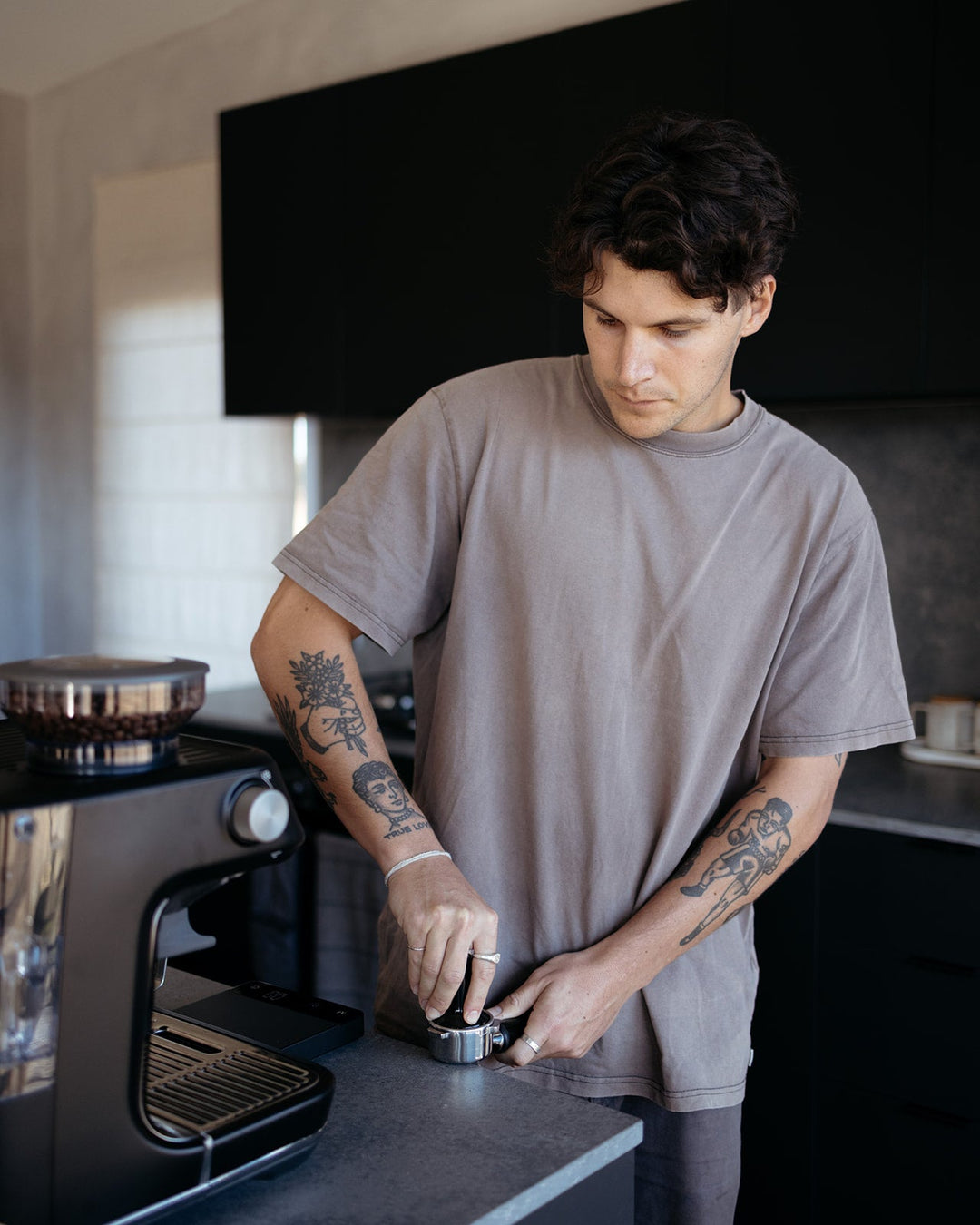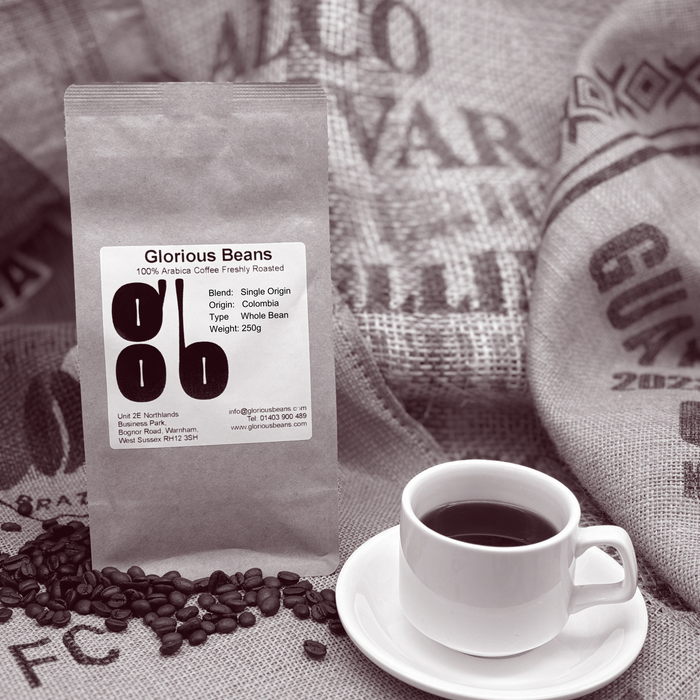What Makes SOE Single Origin Espresso Stand Out from Blends
What Makes SOE Single Origin Espresso Stand Out from Blends
Blog Article
Discovering the Abundant Tastes of Coffee Beans: a Deep Study Coffee and Blended Coffee Beans
When you check out the rich tastes of coffee beans, you reveal a complicated world where each selection brings its own character to your mug. As you navigate via the art of espresso and the creativity behind combined coffees, you'll begin to appreciate the nuances that make each sip distinct.
The Beginnings of Coffee Beans: Checking Out Terroir and Flavor Profiles
When you take a sip of coffee, you're not simply taking pleasure in a drink; you're experiencing an abundant tapestry of flavors formed by the beans' origins. Each area produces one-of-a-kind flavor accounts influenced by soil, elevation, and environment. Beans from Ethiopia typically break with bright, fruity notes, while those from Colombia have a tendency to offer a balanced, nutty sweet taste.
As you discover different beginnings, you'll see exactly how terroir-- the ecological factors impacting a plant-- plays an essential role - Single Origin Espresso. The exact same coffee variety can taste substantially different depending upon where it's grown
When you think about these aspects, you start to appreciate the complexity behind your cup. Each sip narrates of the land and the farmers that supported the beans. So, following time you indulge, think of the journey your coffee took prior to it reached your hands, and savor those complex tastes that reflect its beginning.
Recognizing Coffee: The Art and Scientific Research Behind the Mixture
When you consider espresso, it's not almost the solid taste; it's additionally concerning the methods that bring it to life. Comprehending exactly how different preparation approaches influence preference can transform your brewing experience. Let's explore the complexities of espresso prep work and reveal the special flavor profiles that make each mug special.
Espresso Prep Work Methods
Espresso prep work is both a scientific research and an art, integrating precise strategies with a deep understanding of coffee. To begin, you'll intend to pick high-grade, fresh roasted beans and grind them carefully for excellent removal (Single Origin Espresso). The grind dimension is vital; also crude, and your espresso will certainly be weak, too fine, and it'll be bitter
Following, tamp the grounds uniformly in the portafilter to ensure uniform removal. When you secure it right into the device, go for a developing temperature level between 190 ° F and 205 °
F.As you draw the shot, expect the excellent extraction time-- around 25-30 secs. The result needs to be a rich, luscious espresso with a stunning layer of crema on top. With method, you'll master these strategies.
Flavor Accounts Clarified
The world of espresso uses an abundant tapestry of taste accounts that can elevate your coffee experience. Light roasts commonly display intense level of acidity and vibrant flavors, while dark roasts present much deeper, bolder tones.
Comprehending these profiles assists you select the best espresso for your palate. Try out different blends can reveal unexpected combinations. A well-crafted mix may balance the brilliant notes of an Ethiopian bean with the rich, chocolatey undertones of a Brazilian bean. Embrace the journey of discovering coffee's varied tastes, and you'll transform your coffee ritual into an amazing journey.
Handling Techniques: Exactly How They Influence Flavor and Aroma
While it may seem that the origin of coffee beans is one of the most substantial consider identifying their taste and scent, the processing techniques made use of post-harvest play a just as essential role. You'll locate that these methods can dramatically change the final taste profile of your mug.
As an example, the washed procedure gets rid of the fruit from the beans before fermentation, often resulting in a cleaner, brighter taste. Meanwhile, the natural process leaves the fruit undamaged during drying out, resulting in a sweeter, fruitier profile.
Various other approaches, like honey handling, strike an equilibrium, allowing some fruit mucilage to stay, giving a distinct intricacy.
Each processing technique interacts with the beans' intrinsic qualities, boosting or muting details flavors and scents. So, when you sip that espresso or combined coffee, keep in mind that the journey from cherry to mug is influenced not just by beginning yet also by exactly how those beans were refined.
Roasting Strategies: Unlocking the Full Possible of Coffee Beans
Roasting methods are crucial for exposing the complete possibility of coffee beans, as they change raw, environment-friendly beans into the aromatic, delicious coffee you enjoy. The choice of roasting technique-- light, tool, or dark-- significantly influences taste profiles. Light roasts protect the beans' all-natural level of acidity and fruity notes, while tool roasts equilibrium sweet taste and splendor. Dark roasts, on the various other hand, emphasize bold, smoky flavors.
A slower roast at reduced temperature levels allows for complex tastes to create, while a quicker roast can heighten bitterness. By understanding these methods, you'll expose a world of flavor, boosting your coffee experience to new heights.
The Magic of Blended Coffee: Creating One-of-a-kind Flavor Experiences
Creating an one-of-a-kind taste experience with blended coffee can change your morning routine into an exploration of preference. By combining various beans from various areas, you can reveal a harmony of flavors that elevate your mug to brand-new elevations. Each blend deals a distinct account, balancing body, acidity, and sweetness to produce something genuinely special.
When you select a mix, you're not just selecting a coffee; you're choosing a trip across diverse landscapes and societies. Explore various mixes allows you to uncover your individual favorites, whether you appreciate fruity notes or rich, chocolatey undertones.

Tasting Notes: Acknowledging the Subtleties in Your Mug
As you sip your coffee, you might observe a range of flavors dig this dancing on your palate, each exposing the details of the beans. You may taste the brilliant acidity evocative citrus or the deep, abundant notes akin to dark chocolate. The sweetness can stimulate honey or caramel, balancing the overall profile beautifully.
Focus on the body of the coffee-- does it feel light and ventilated, or is it full and velvety? The surface, as well, supplies ideas; a lingering aftertaste may hint at nuttiness or floral undertones.

Don't forget to explore the distinct attributes of various beginnings, as each area gives unique flavors - Single Origin Espresso. For instance, Ethiopian coffees usually present fruity notes, while Colombian beans may showcase a more spherical sweet taste. By acknowledging these nuances, you'll deepen your admiration for each and every cup, elevating your coffee experience to brand-new heights

Developing Techniques: Optimizing Flavor Removal for every single Bean
When you check out the numerous developing methods, you'll uncover that each method can considerably impact the taste account of your coffee. From French press to pour-over, each method extracts various substances, improving or muting details notes. As an example, utilizing a French press allows oils to stay in the brew, developing a richer taste, while pour-over emphasizes quality and illumination.
Temperature level and grind size additionally play important duties. A coarser grind functions best for cold brews, while a great grind is excellent for espresso. Trying out with water temperature-- in between 195 ° F and 205 ° F-- can disclose covert tastes, too.
Don't forget steeping time; a fast extraction can bring about sour notes, while over-extraction may produce bitterness. By changing these variables, you can make best use of flavor removal and absolutely boost your coffee experience. Take pleasure in the journey of finding what technique ideal suits your palate!
Often Asked Inquiries
What Is the Ideal Water Temperature for Brewing Coffee?
The suitable water temperature level for brewing coffee's between 195 ° F and 205 ° F. If you utilize water that's as well warm, you'll over-extract tastes; also cool, and you will not remove sufficient. Goal for that pleasant area for the ideal mixture!
How Does Grind Size Impact Coffee Taste?
Grind size significantly influences coffee taste. Better grinds remove extra oils and flavors, resulting in a bolder taste, while coarser grinds yield a lighter flavor. Adjusting work dimension aids you attain your wanted coffee account.
Exist Wellness Conveniences Linked With Alcohol Consumption Coffee?

What Is the Difference In Between Arabica and Robusta Beans?
Arabica beans are smoother and sweeter, usually including fruity flavors, while robusta beans are stronger with a bitter preference and greater caffeine material. You'll notice these distinctions in fragrance and brewing experience.
How Can I Shop Coffee Beans for Quality?
To keep coffee beans for freshness, maintain them sites in a closed container, away from wetness, light, and warm. If you just grind what you require right before developing., you'll keep their taste longer.
Discovering the Abundant Flavors of Coffee Beans: a Deep Dive Into Espresso and Blended Coffee Beans.
When you explore the rich tastes of coffee beans, you uncover a complex globe where each selection brings its see it here very own character to your cup.When you take a sip of coffee, you're not simply enjoying a beverage; you're experiencing a rich tapestry of flavors formed by the beans' beginnings.Roasting techniques are crucial for revealing the full capacity of coffee beans, as they transform raw, green beans into the fragrant, delicious coffee you appreciate.As you drink your coffee, you could notice a range of flavors dancing on your taste buds, each revealing the intricacies of the beans.
Report this page